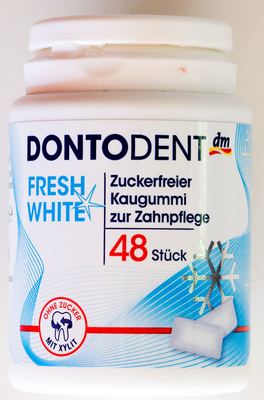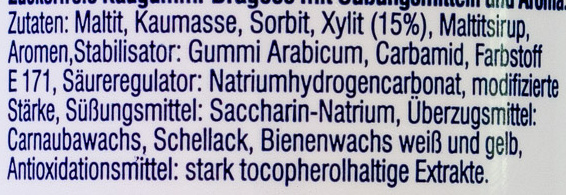Dontodent Fresh White - 65 g
This product page is not complete. You can help to complete it by editing it and adding more data from the photos we have, or by taking more photos using the app for Android or iPhone/iPad. Thank you!
×
Barcode: 4010355843937 (EAN / EAN-13)
Common name: Zuckerfreie Kaugummi-Dragees mit Süßungsmitteln und Aroma
Quantity: 65 g
Packaging: Plastic, Hdpe-high-density-polyethylene
Brands: Dontodent
Categories: Snacks, Sweet snacks, Confectioneries, Chewing gum, Sugar-free chewing gum
Labels, certifications, awards: Low or no sugar, Made in Germany, No sugar
Stores: Dm
Countries where sold: Germany
Matching with your preferences
Environment
Packaging
Transportation
Report a problem
Data sources
Product added on by twoflower
Last edit of product page on by frank4711.
Product page also edited by packbot, roboto-app, stivo.
If the data is incomplete or incorrect, you can complete or correct it by editing this page.









